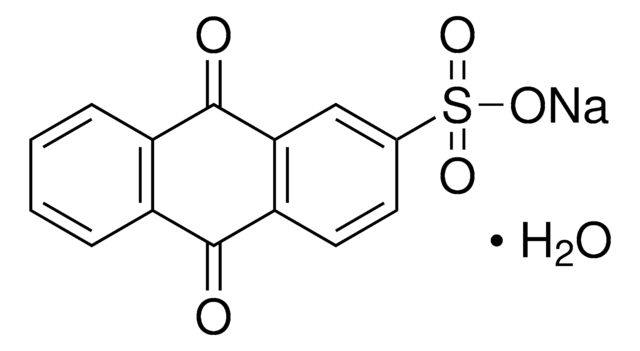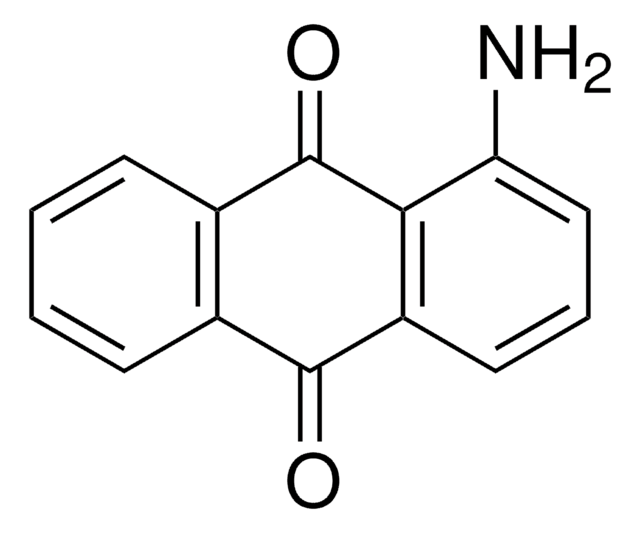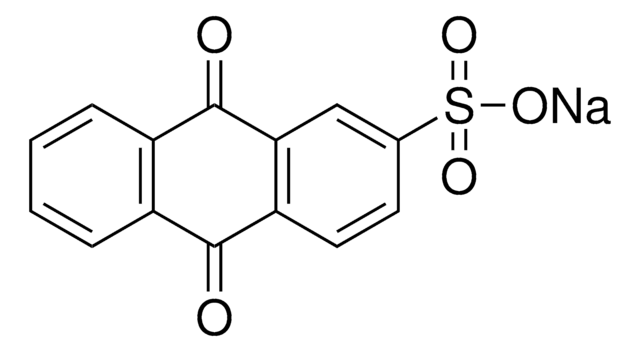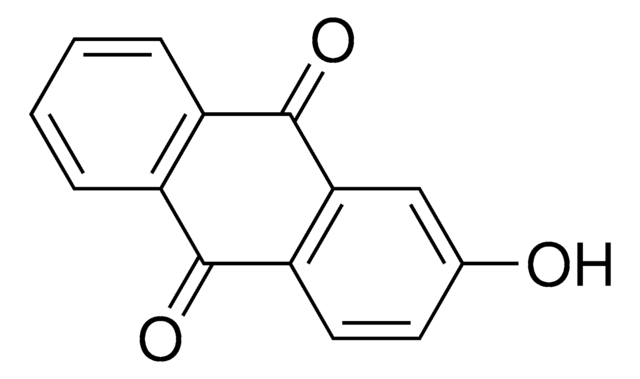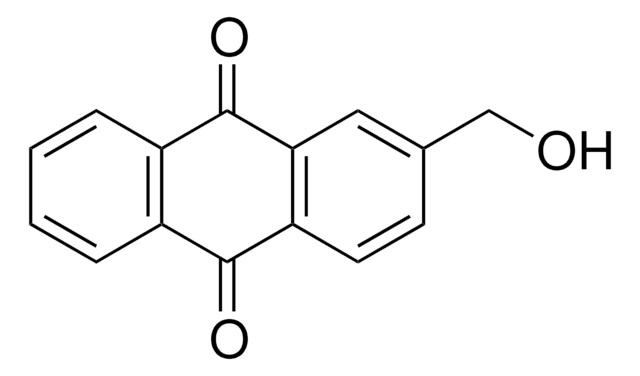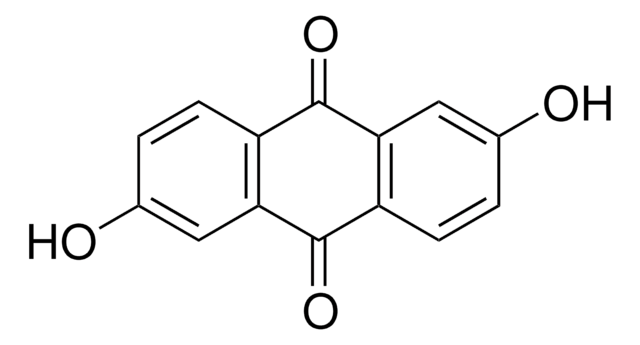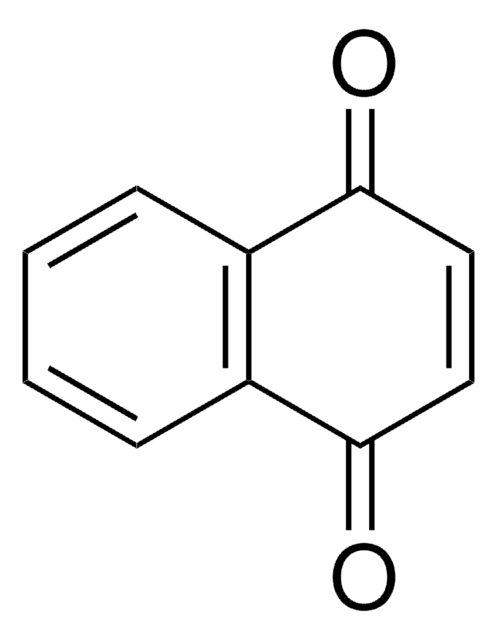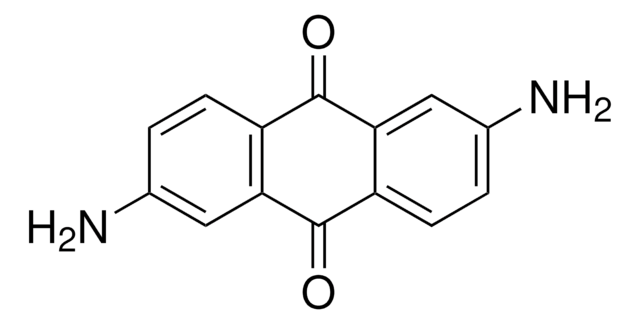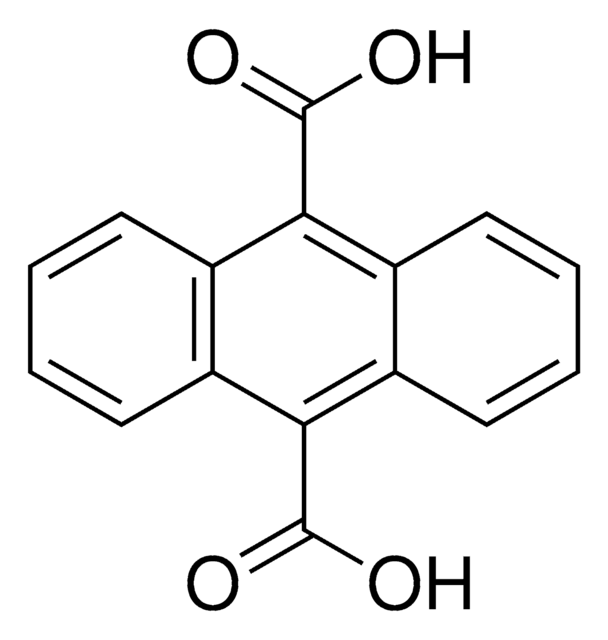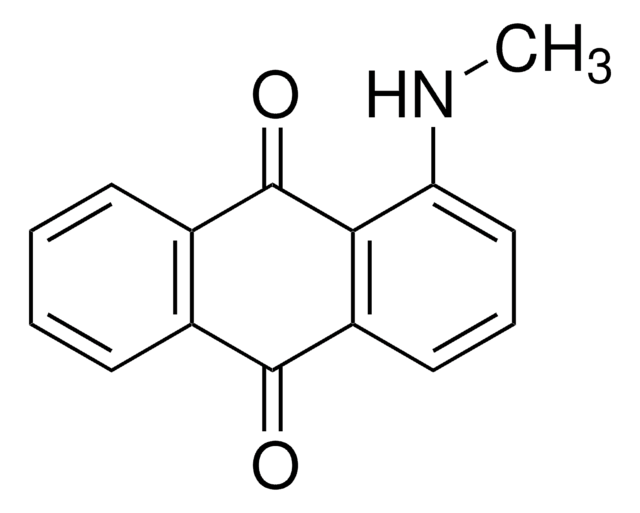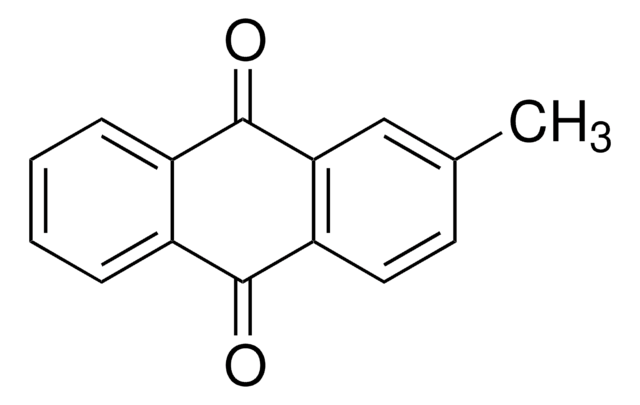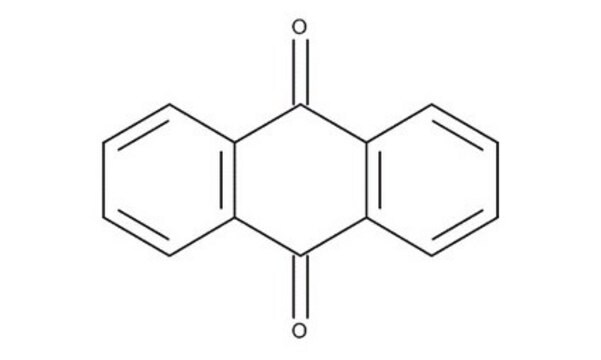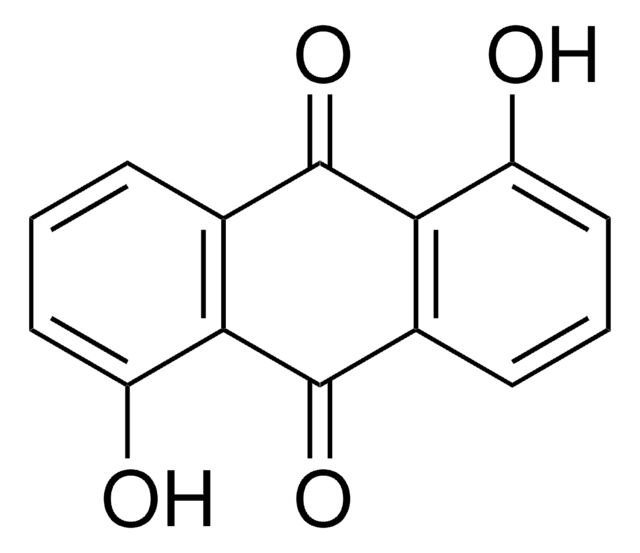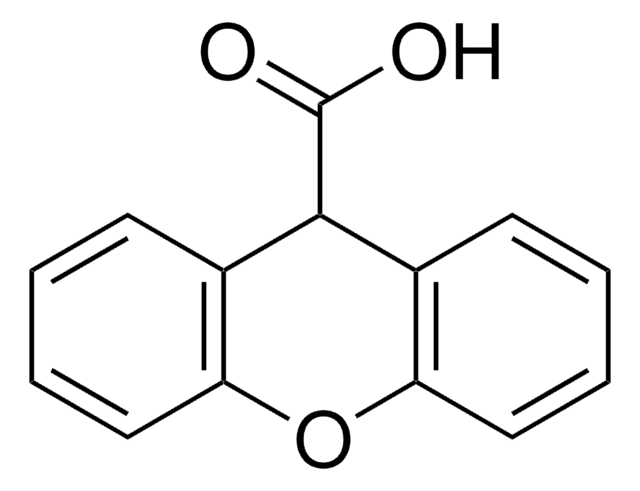Wszystkie zdjęcia(1)
Kluczowe dokumenty
252727
Anthraquinone-2-carboxylic acid
98%
Synonim(y):
9,10-Dihydro-9,10-dioxo-2-anthracenecarboxylic acid
Zaloguj sięWyświetlanie cen organizacyjnych i kontraktowych
About This Item
Wzór empiryczny (zapis Hilla):
C15H8O4
Numer CAS:
Masa cząsteczkowa:
252.22
Numer WE:
Numer MDL:
Kod UNSPSC:
12352100
Identyfikator substancji w PubChem:
NACRES:
NA.22
Polecane produkty
Poziom jakości
Próba
98%
Formularz
solid
mp
287-289 °C (lit.)
grupa funkcyjna
carboxylic acid
ketone
ciąg SMILES
OC(=O)c1ccc2C(=O)c3ccccc3C(=O)c2c1
InChI
1S/C15H8O4/c16-13-9-3-1-2-4-10(9)14(17)12-7-8(15(18)19)5-6-11(12)13/h1-7H,(H,18,19)
Klucz InChI
ASDLSKCKYGVMAI-UHFFFAOYSA-N
Kod klasy składowania
11 - Combustible Solids
Klasa zagrożenia wodnego (WGK)
WGK 3
Temperatura zapłonu (°F)
Not applicable
Temperatura zapłonu (°C)
Not applicable
Środki ochrony indywidualnej
Eyeshields, Gloves, type N95 (US)
Wybierz jedną z najnowszych wersji:
Masz już ten produkt?
Dokumenty związane z niedawno zakupionymi produktami zostały zamieszczone w Bibliotece dokumentów.
Klienci oglądali również te produkty
S Y Tsai et al.
Journal of pharmaceutical sciences, 82(12), 1250-1254 (1993-12-01)
The physicochemical properties of 9,10-anthraquinone-2-carboxylic acid (AQCA) were investigated by thermal analysis, powder X-ray diffraction pattern, solubility, and partition coefficient. The chemical structure of AQCA was confirmed by the data from UV, Fourier transform IR (FTIR), and NMR analyses. Solubility
Coupled Proton and Electron Transfer: Adsorbed Anthraquinone-2-carboxylic Acid Monolayers.
Forster RJ.
Journal of the Electrochemical Society, 144(4), 1165-1173 (1997)
Yiwen Zhu et al.
Materials (Basel, Switzerland), 13(16) (2020-08-17)
Antimicrobial and antiviral materials have attracted significant interest in recent years due to increasing occurrences of nosocomial infections and pathogenic microbial contamination. One method to address this is the combination of photoactive compounds that can produce reactive oxygen species (ROS)
A Bielawska et al.
Folia histochemica et cytobiologica, 39 Suppl 2, 207-208 (2002-02-01)
Although prolidase [E.C.3.4.13.9] is found in normal cells, substantially increased levels are found in some neoplastic tissues. Prolidase evokes the ability to hydrolyse the imido-bond of various low molecular weight compounds coupled to L-proline. The synthesis of three proline analogues
A Bielawska et al.
Roczniki Akademii Medycznej w Bialymstoku (1995), 43, 201-209 (1999-02-11)
The feasibility to targeting prolidase as an antineoplastic prodrug--converting enzyme has been examined. The synthesis of proline analogue of anthraquinone-2-carboxylic acid (potential antineoplastic agent) conjugated through imido-bond (potential target for prolidase action) has been performed. The product was found to
Nasz zespół naukowców ma doświadczenie we wszystkich obszarach badań, w tym w naukach przyrodniczych, materiałoznawstwie, syntezie chemicznej, chromatografii, analityce i wielu innych dziedzinach.
Skontaktuj się z zespołem ds. pomocy technicznej
